Numeration Reading Answers
5 min read
Updated On
-
Copy link
Table of Contents

Limited-Time Offer : Access a FREE 10-Day IELTS Study Plan!
The Academic passage ‘Numeration’ is a reading passage that appeared in an IELTS Test.
Since questions get repeated in the IELTS exam, these passages are ideal for practice. If you want more practice, try taking an IELTS reading practice test.
Numeration

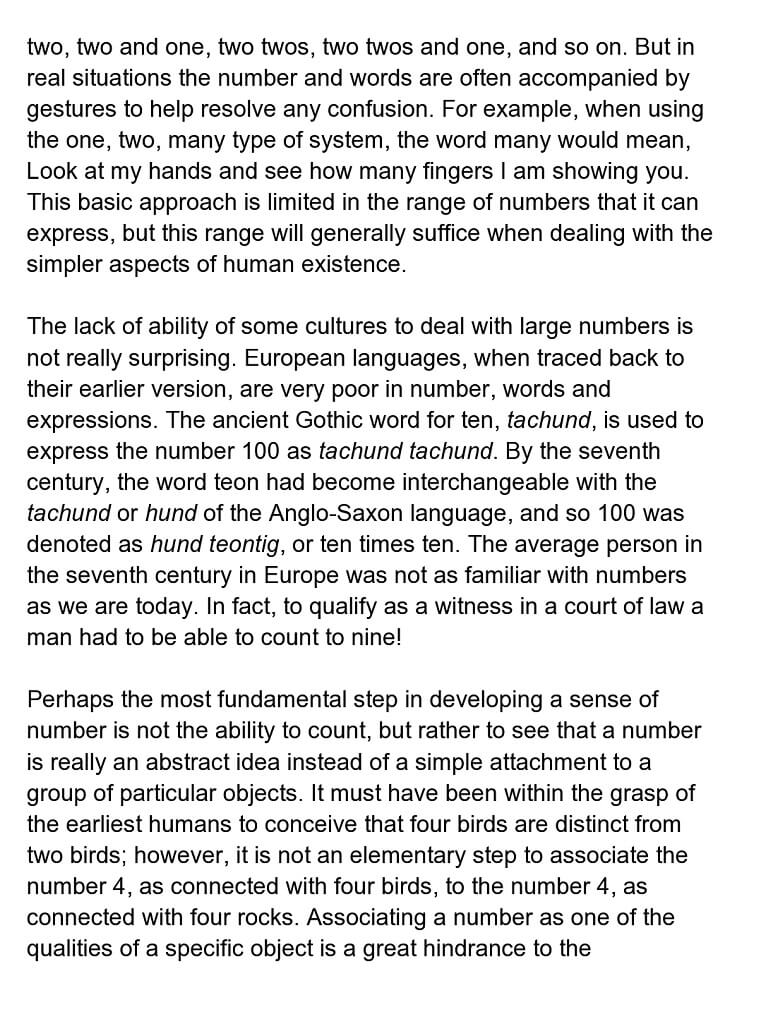
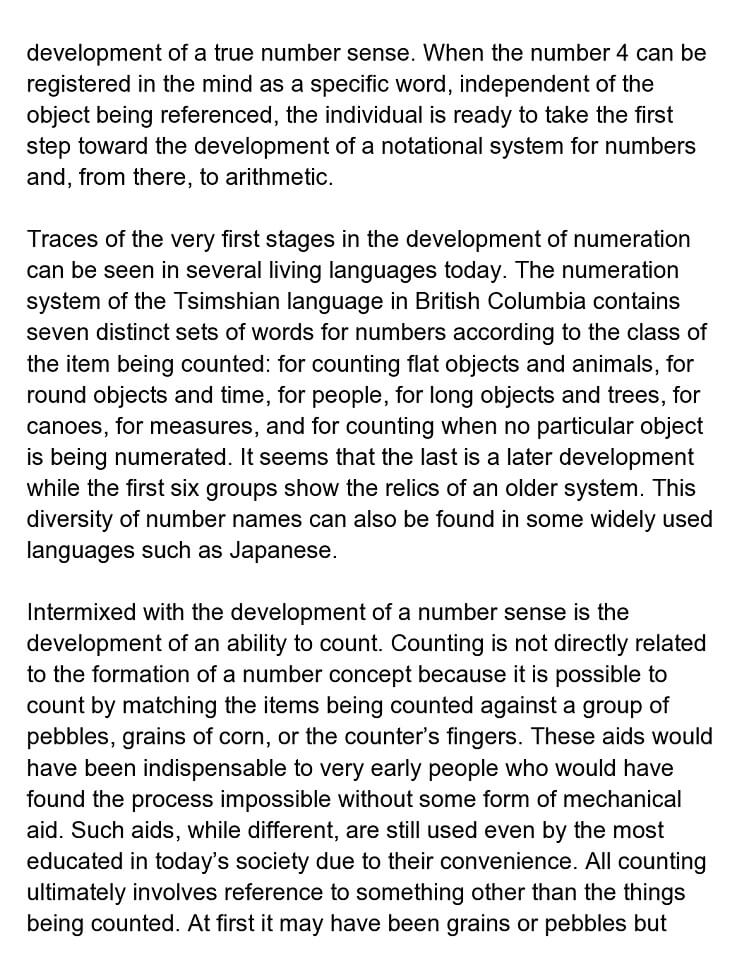
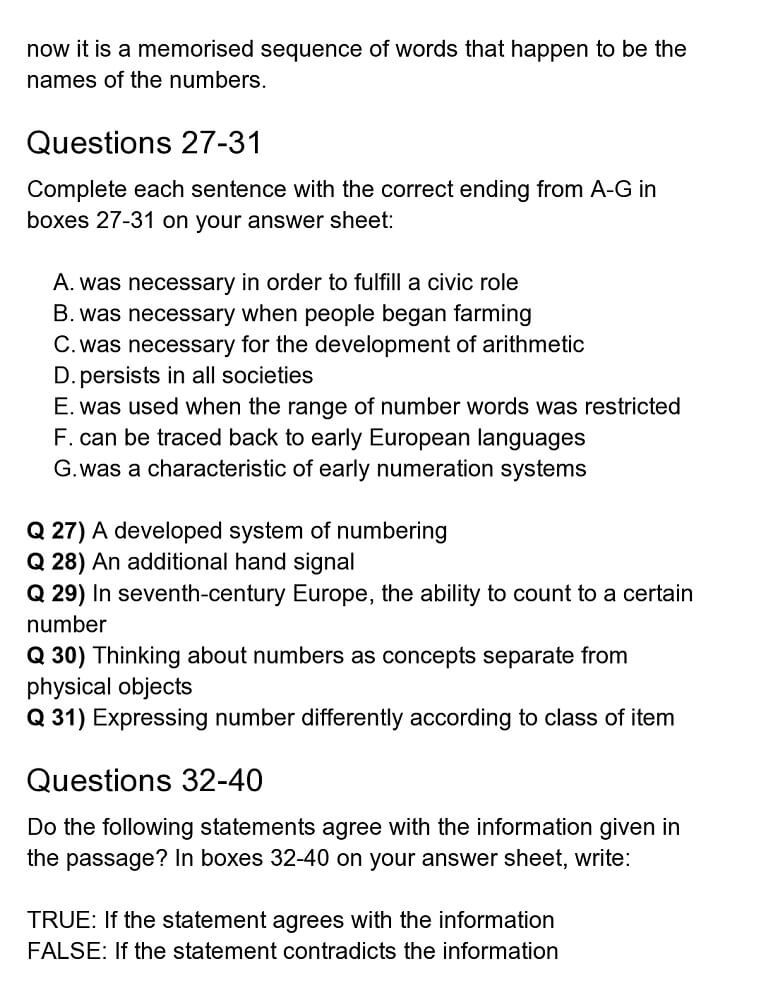
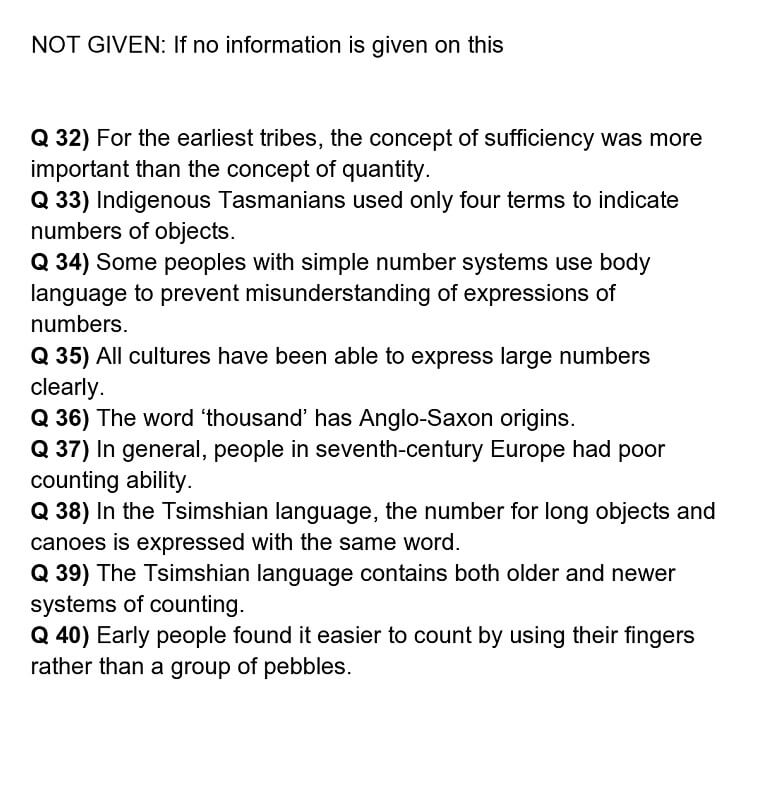
Answers
Unlock Answers
| Question Number | Answers | Explanation |
|---|---|---|
| 27 | B | In paragraph 2, the writer mentions that as ‘they’ (‘our ancestors’ or people) began ‘to settle, grow plants, and herd animals’ (farming), the need for ‘a sophisticated number system’ (developed system of numbering) became paramount. Hence the answer is B. |
| 28 | E | In paragraph 3, the writer states that when people used ‘the one, two, many type of system’ (additional hand signal), the word ‘many’ might mean ‘Look at my hands and see how many fingers I am showing you’. This basic approach was ‘limited’ (restricted) ‘in the range of numbers’ that it expresses. Hence, the answer is E. |
| 29 | A | In the last two sentences of paragraph 4, it is given that an average person in ‘the seventh century in Europe’ was not as familiar with numbers as we are today. But, to qualify as ‘a witness in a court of law’ (civic role), a man ‘had to be able to’ (necessary) ‘count to nine’ (ability to count to a certain number). Hence, the answer is A. |
| 30 | C | In the last sentence of paragraph 5, it is said that when ‘a number is registered in the mind’ (number as concept) as a specific word, ‘independent of the object being referenced’ (separate from physical objects), the individual is ready to take the first step towards ‘the development of a notional system for numbers and, from there, to arithmetic’ (development of arithmetic). Hence, the answer is C. |
| 31 | G | The second sentence of paragraph 6 brings out the fact that the numeration system of ‘Tsimshian language in British Columbia’ (early European language) contains ‘seven distinct sets of words for numbers’ according to the ‘class of item’ that is being counted. Hence, the answer is G. |
| 32 | True | The second sentence of Paragraph 2 states that even ‘the earliest of tribes’ had a system of numeration that, if not advanced, was ‘sufficient’ (sufficiency) for the tasks that they had to perform. Our ancestors had ‘little use for actual numbers’ (quantity)…’ As the keywords ‘the earliest of tribes’, ‘sufficient’ and ‘little use of actual numbers’ are given, hence. the answer is true. |
| 33 | False | In the second sentence of paragraph 3, it is mentioned that ‘the indigeneous people of Tasmania’ (Indigeneous Tasmanian) were ‘only able to count one, two, many…’. So, they were able to count three terms to indicate the number of objects, not four as mentioned in the statement. Hence, the answer is false. |
| 34 | True | In the third sentence of paragraph 3, it stated that in real situations, the ‘numbers’ and words are often ‘accompanied by’ (use) ‘the gestures’ (use body language) to help resolve any ‘confusion’ (misunderstanding). Hence, the answer is true. |
| 35 | False | In the first sentence of paragraph 4, the writer mentions that the ‘lack of ability’ of ‘some cultures’ to ‘deal with large numbers’ is not really surprising. He adds that ‘European languages’, when traced back to earlier version, are very ‘poor in number’, words, and expressions. This information contradicts the statement, and so the answer is false. |
| 36 | Not Given | In the fourth paragraph, it is mentioned that, by the seventh
century, the word ‘teon’ had become interchangeable with the ‘tachund or hund’ of the Anglo-Saxon language, and so 100 was denoted as ‘hund teontig, or ten times ten’. There is no mention of ‘1000’. So, the information is not given in the passage and the answer is ‘not given’. |
| 37 | True | In the fifth sentence of paragraph 4, it is given that ‘an average person’ (in general, people) in the ‘seventh century in Europe’ was ‘not as familiar with numbers’ (poor in counting abilities) as we are today. As the keywords ‘an average person’, ‘seventh century in Europe’ and ‘not as familiar with numbers’ are mentioned, the answer is true. |
| 38 | False | The second sentence of paragraph 6 brings out the fact that in the numeration system of ‘Tsimshian language’ in British Columbia, there are ‘seven distinct sets of words for numbers’ according to the ‘class of item’: for counting flat objects and animals, for
round objects and time, for people, ‘for long objects and trees’, ‘for canoes’, for measures, and for counting when no particular object is being numerated. As the statement contradicts the information in the passage, the answer is false. |
| 39 | True | The second sentence of paragraph 6 brings out the fact that in the numeration system of ‘Tsimshian language’ in British Columbia’, there are ‘seven distinct sets of words for numbers’ according to the ‘class of item’. In the third sentence, it is added that the ‘last’ (for counting when no particular object is being numerated) is a ‘later development’ (new), while ‘‘the first six groups’ show the ‘relics of an older system’ (old). Hence, the statement agrees with the information and the answer is true. |
| 40 | Not Given | In the last paragraph, it is informed that counting was ‘not directly related
to the formation of a number concept’ because it is ‘possible to count by matching the items’ being ‘counted against a group of pebbles, grains of corn, or the counter’s fingers’. It is not given whether the people found it easier to count by hand or by using pebbles. So, the information is not given in the passage and the answer is ‘not given’. |
Check More IELTS Reading Answers
Also check :
Practice IELTS Reading based on question types

Start Preparing for IELTS: Get Your 10-Day Study Plan Today!
Recent Articles

Nehasri Ravishenbagam

Haniya Yashfeen

Haniya Yashfeen

Haniya Yashfeen
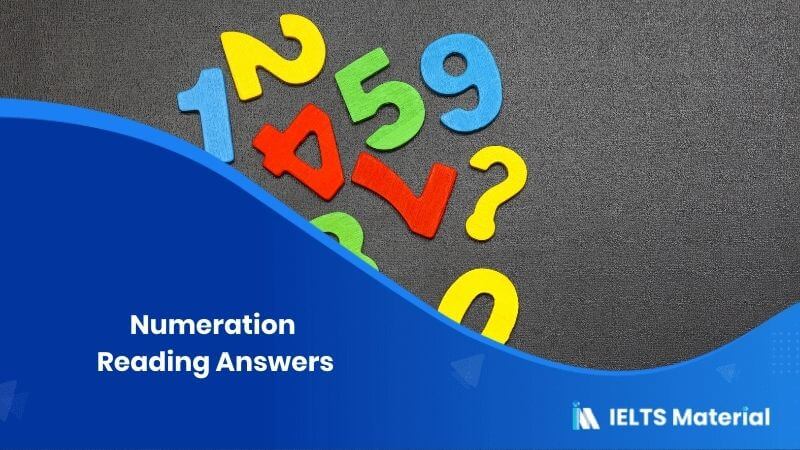



Post your Comments